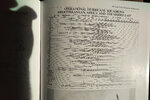Its interesting to note that the RAF never thought any P-40 was good enough for service in Northern Europe. They kept their Hurricane IIs till mid 42 , after which they were replaced by Typhoons. In the DAF the Hurricanes were kept in front line service till the Spring of 43 after which they were replaced by Spitfires. In the Burma theater the Hurricanes excellent ground attack abilities and servicability kept in in front line service in large numbers till late 44, after which it was largely replaced by Thunderbolts.
P-40s weren't deemed suitable for defense of England due to their altitude limitation.
Hurricanes were actually replaced by P-40s in multiple squadrons in the Med, and by mid 42 almost all that were still flying were used as bombers. The only place they kept using them as fighters seems to be Burma.
In Russia Hurricanes were typically replaced by Yaks or P-39s.

